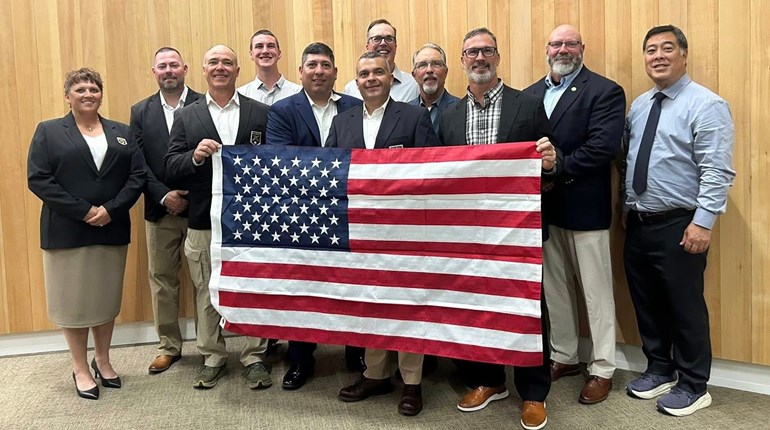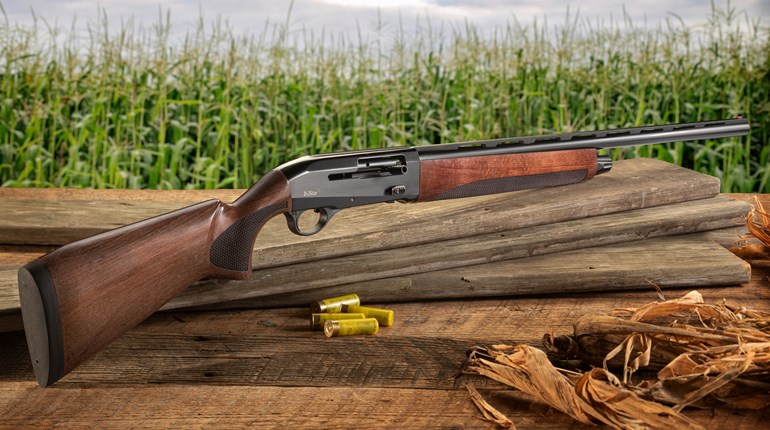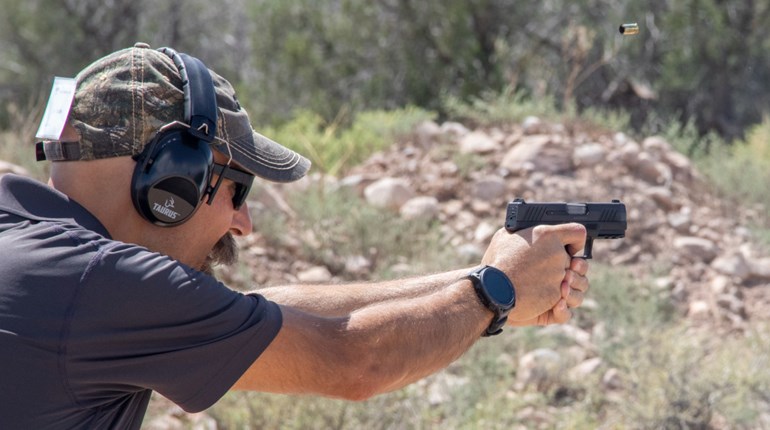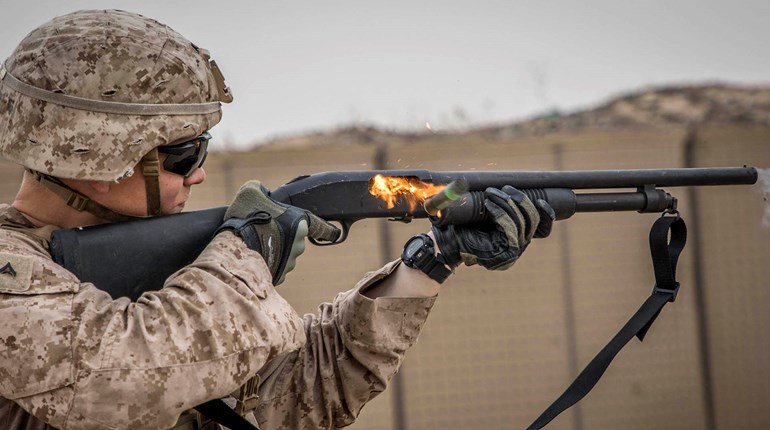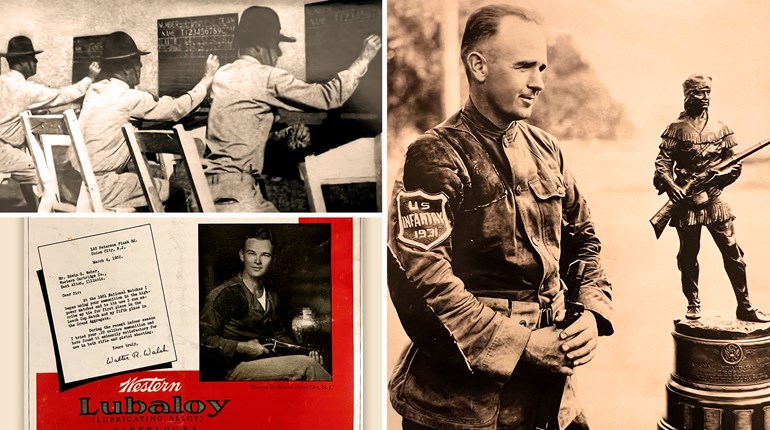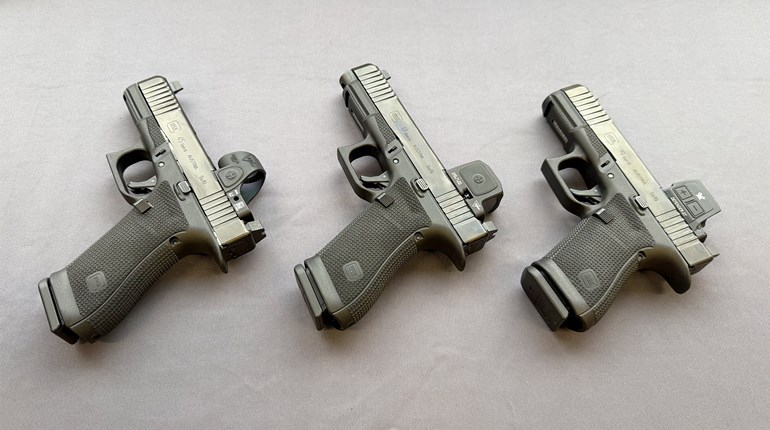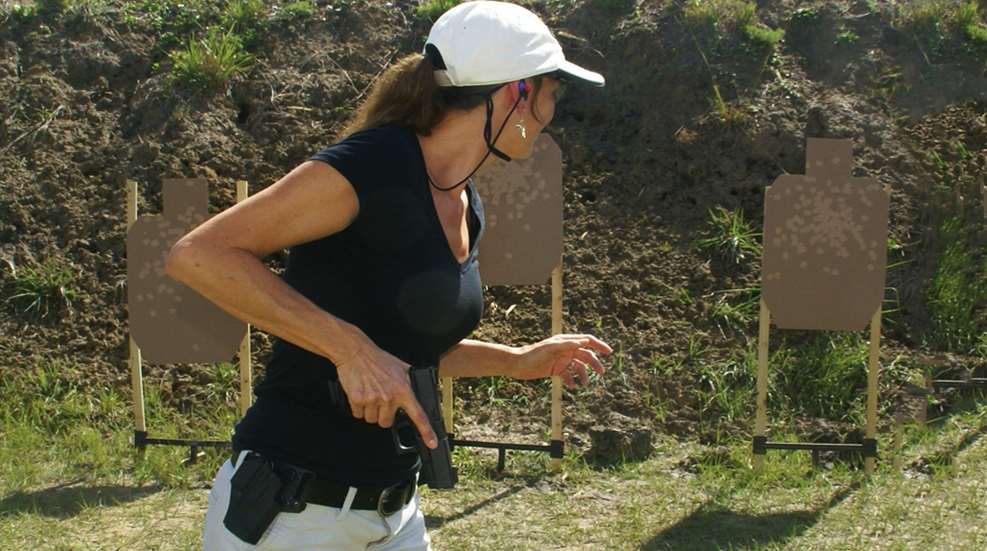
It’s been waggishly-said that there are only two types of shooters in action matches—those who have been Disqualified (DQ) from a match, and those who will be. Although it’s a ‘tongue-in-cheek’ statement there’s an element of truth there.
Safety is the paramount consideration in any action match, whether rifle, handgun, 2-Gun or 3-Gun. And it has to be, because shooters are running quickly through a Course of Fire (COF) with a loaded firearm. Unsafe gun handling will not be tolerated.
There are many different ways a shooter can receive a DQ, and the most common is violation of the 180 Rule.
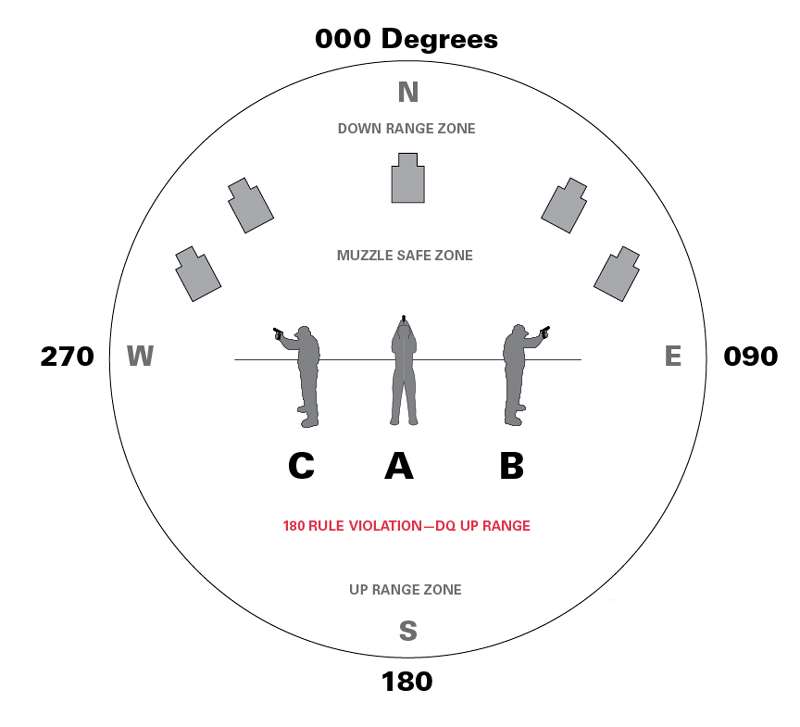
A simple way to describe the 180 Rule is for shooters to imagine themselves standing in the center of a compass rose and facing due North (000 degrees). North is downrange from the Start position. Anything behind the shooter is up range to the South at 180 degrees. A line drawn from East (90 degrees) to West (270 degrees) passes directly through the shooter’s body.
As long as the gun muzzle stays to the North side of that East/West line, and does not wander into the 180 degree zone, the shooter is good to go. Let the muzzle wander South of that line and the 180 Rule is violated. The shooter will get a DQ.
That’s easy to understand as the shooter stands at the starting point for the COF. One certainly would not turn their muzzle up range towards the other shooters or the Range Officer/Safety Officer. The factor that complicates the 180 Rule is that the 90-270 degree East/West compass line moves with the shooter through whatever movements are required for the COF—whether they are moving forward, backwards, or laterally.
If a shooter gets ahead of themselves it only takes one careless moment to break that 180. Here are the four most common ways that shooters wind up with a 180 DQ.
Reloading While Moving Laterally
Some COFs will start the shooter moving downrange, and at some point force them to move laterally along the target array. At this point the shooter will be moving parallel to their 90-270 line. Making a reload while moving laterally is the most common way to violate the 180 Rule, and it’s not hard to see why.
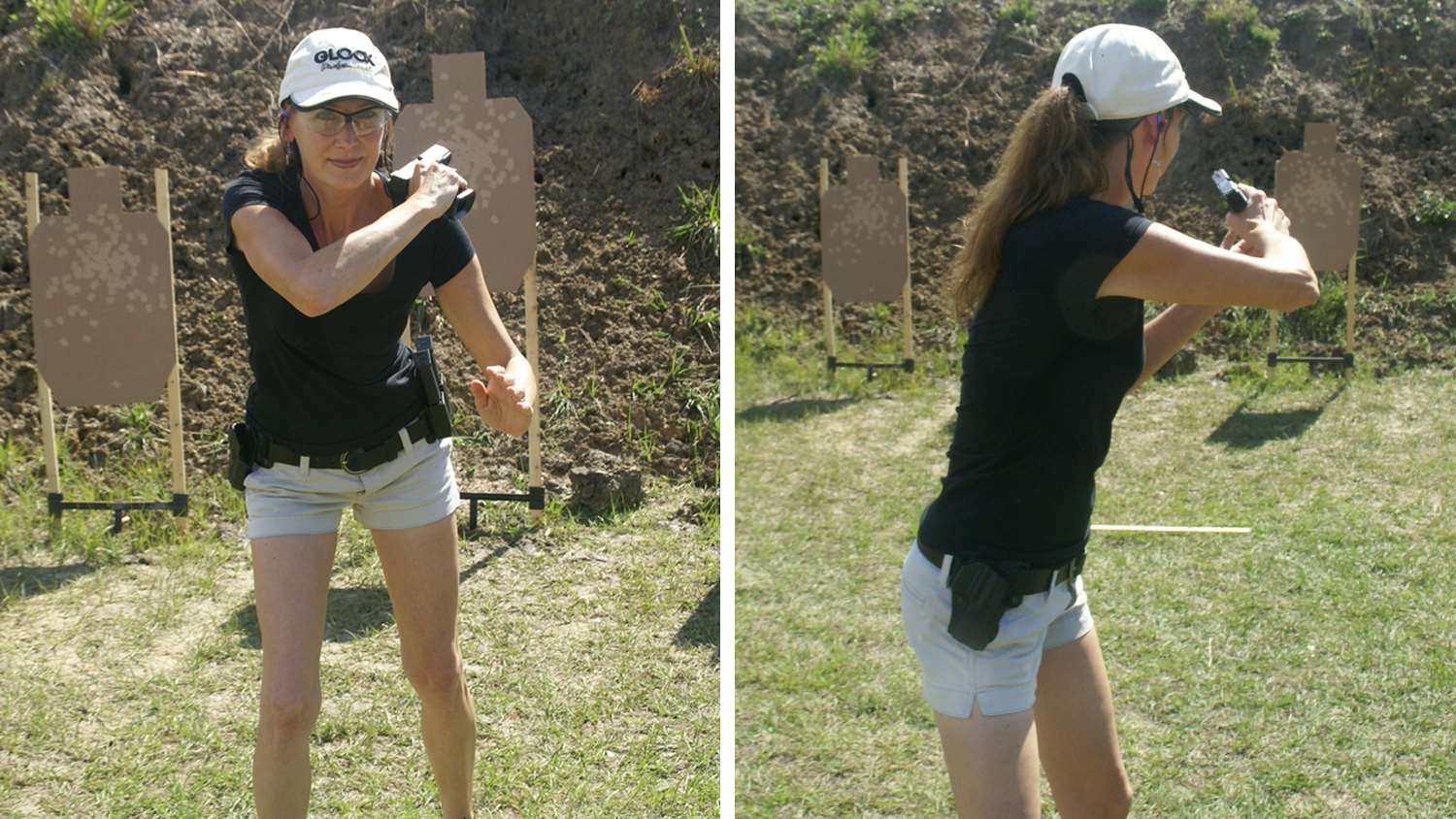
The most effective (and commonly-taught) way to reload a semi-auto handgun is for the shooter to drop their support hand from the gun to reach for a new magazine. The shooting hand then cants the magazine well inward, and towards their support side, keeping the gun in front of their eyes while they eject the spent magazine from the gun. The new magazine is slapped into place, the grip re-assumed, and they continue shooting.
If a right-handed shooter does this while moving from their right to their left, and parallel to the targets, the muzzle will invariably cross the 180 line to the South and be pointing up range. The same is true for a southpaw moving left to right. It’s a 180 Rule DQ that has trapped many an unwary shooter!
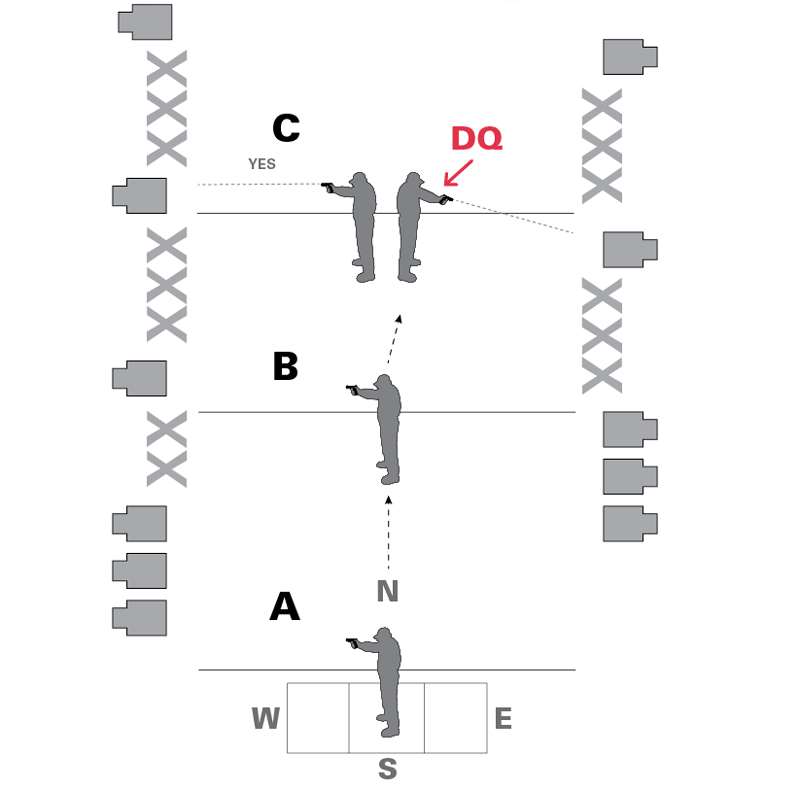
Experienced shooters have learned to analyze a stage and choose their path through it to avoid this reloading trap. If it can’t be avoided they will change their reload procedure. Instead of canting the magazine well towards their support side, they will roll the shooting hand outward to their strong side as they eject the spent magazine, and bring the gun hand elbow slightly inward. This will keep the muzzle pointing North of the 180 line and place the magazine well parallel to the ground to allow a new magazine to be inserted. It takes a bit of practice, but it’s better than going home early.
Advancing Up Range
Shooters will see COFs that require them to start at the extreme downrange position, maybe engage some targets, but then move up range towards the 180 zone before turning back down range to engage additional targets. North is still North, even though it is now at the shooter’s back. If their muzzle gets in front of them as they move up range it will cross that East/West, point to the South, and will violate the 180 Rule.
Newer shooters are sometimes so intimidated by this that they will slowly back up range while making certain their muzzle is pointed down range. That takes a lot of time. Experienced shooters have learned two ways to safely deal with this while advancing quickly.
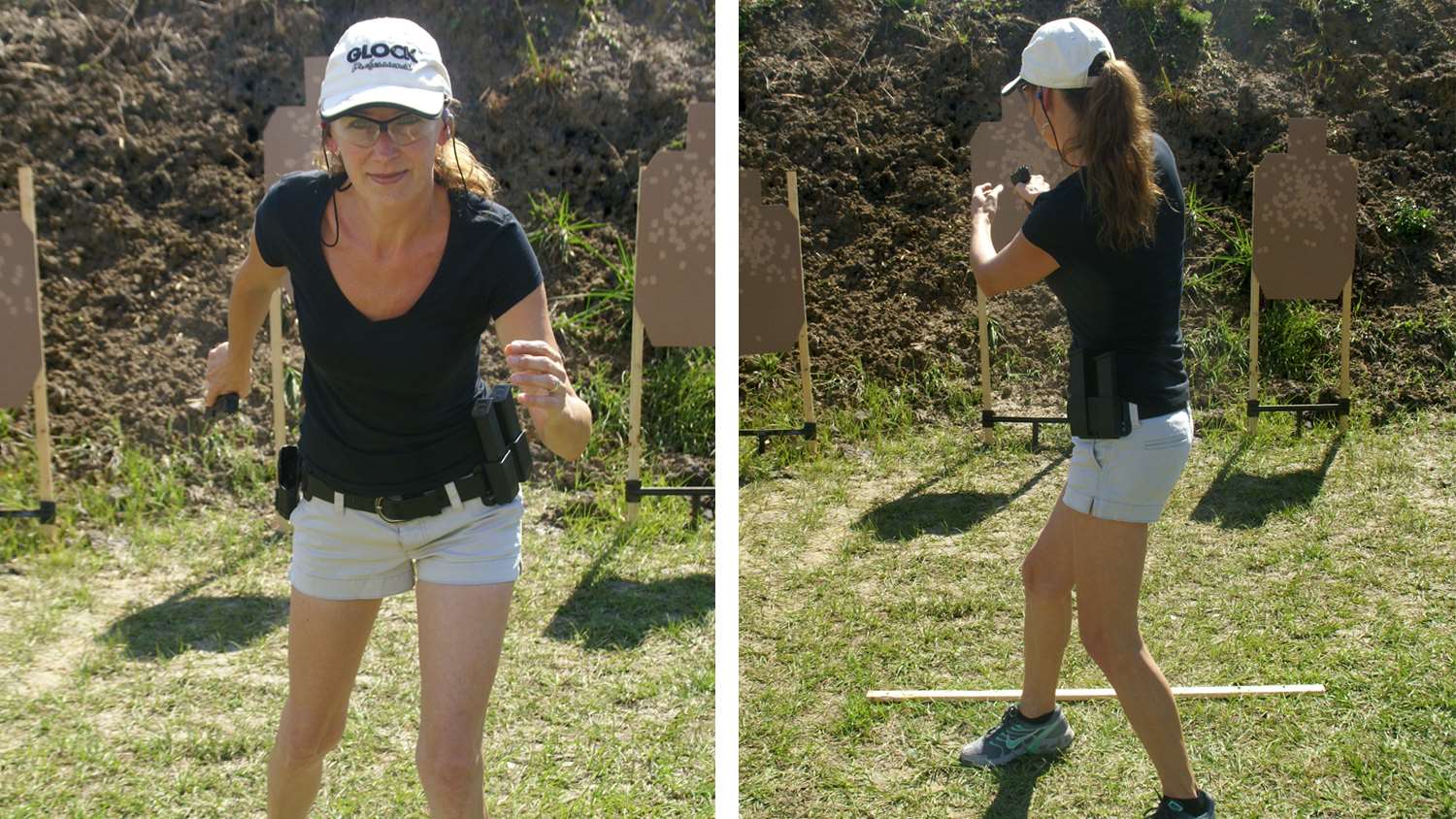
One is to pivot towards their support side (pivot left for a right-handed shooter) and leave the gun in their strong hand while trailing it behind them at full arm extension, pointing down range (with their finger off the trigger in the Register Position) as they run up range to reach their next shooting position. Then they must pivot their body towards their strong side (gun hand side) to reacquire their grip and stance.
The other is to pivot towards their strong side (right side for a right-handed shooter) and bring the gun hand up and into contact with their support side shoulder (finger in the Register Position)—pointing the gun over their support side shoulder while they move up range. They must then remember to pivot back towards their support side to reacquire their shooting stance.
Both work, and require some practice to become comfortable with, as well as remembering to pivot in the right direction. Pivoting wrong breaks the 180. Performed correctly, it gains valuable movement time and a better score—all without risk.
Overrunning a Target
Many COFs will have the shooter begin at the Start Position, and then advance forward and down range through the COF while engaging targets to their right and left until they reach the final targets at the end. If a shooter gets in too big a hurry and runs even slightly past a target, turning back to shoot it will break the 180 and will result in a DQ.
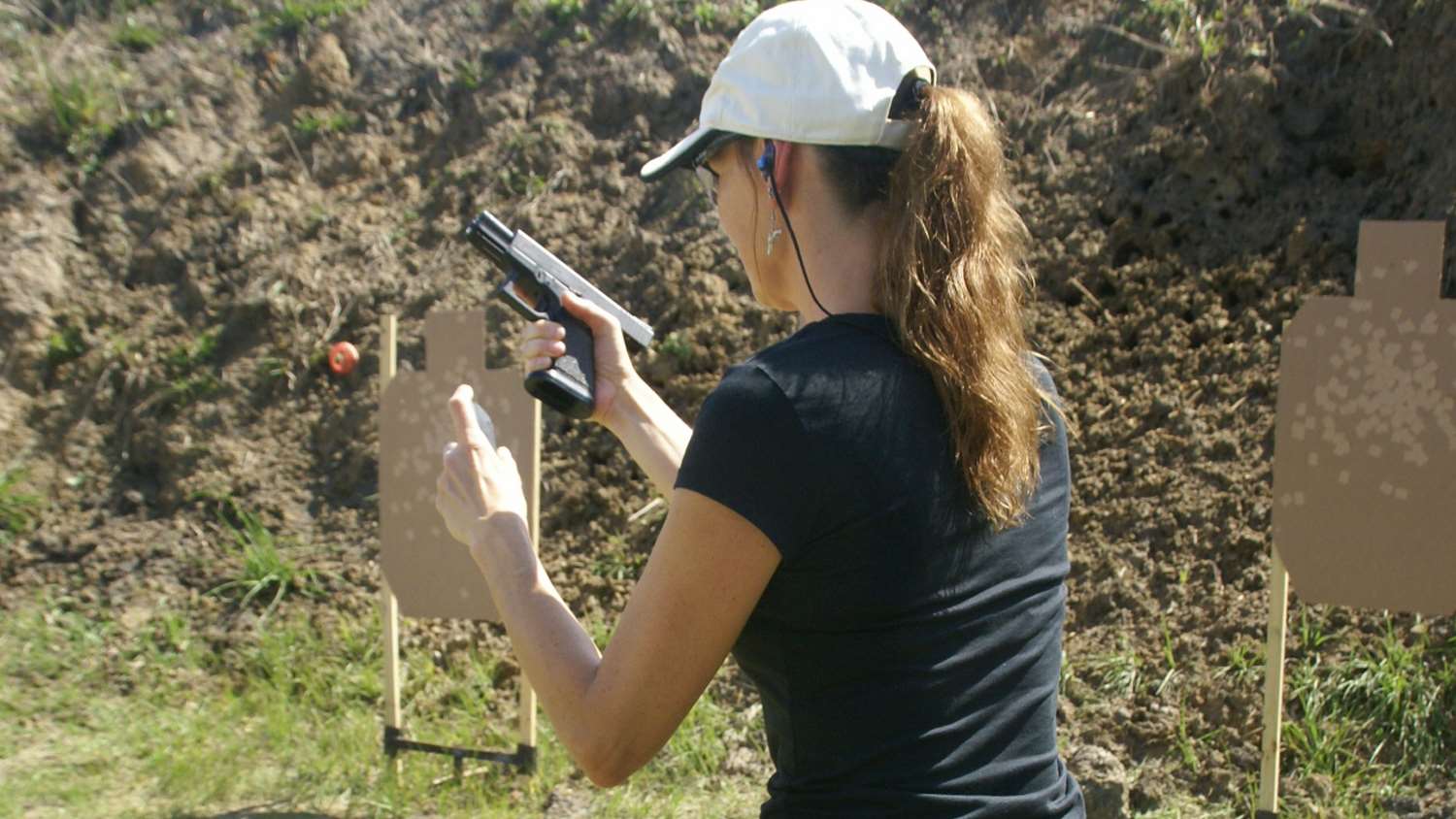
Speeding through a COF is good. But, the most experienced shooters have learned that ‘controlled speed’ is best. Their stage planning will make certain that their shooting points for every target they engage is forward (North) of their 90-270 degree line.
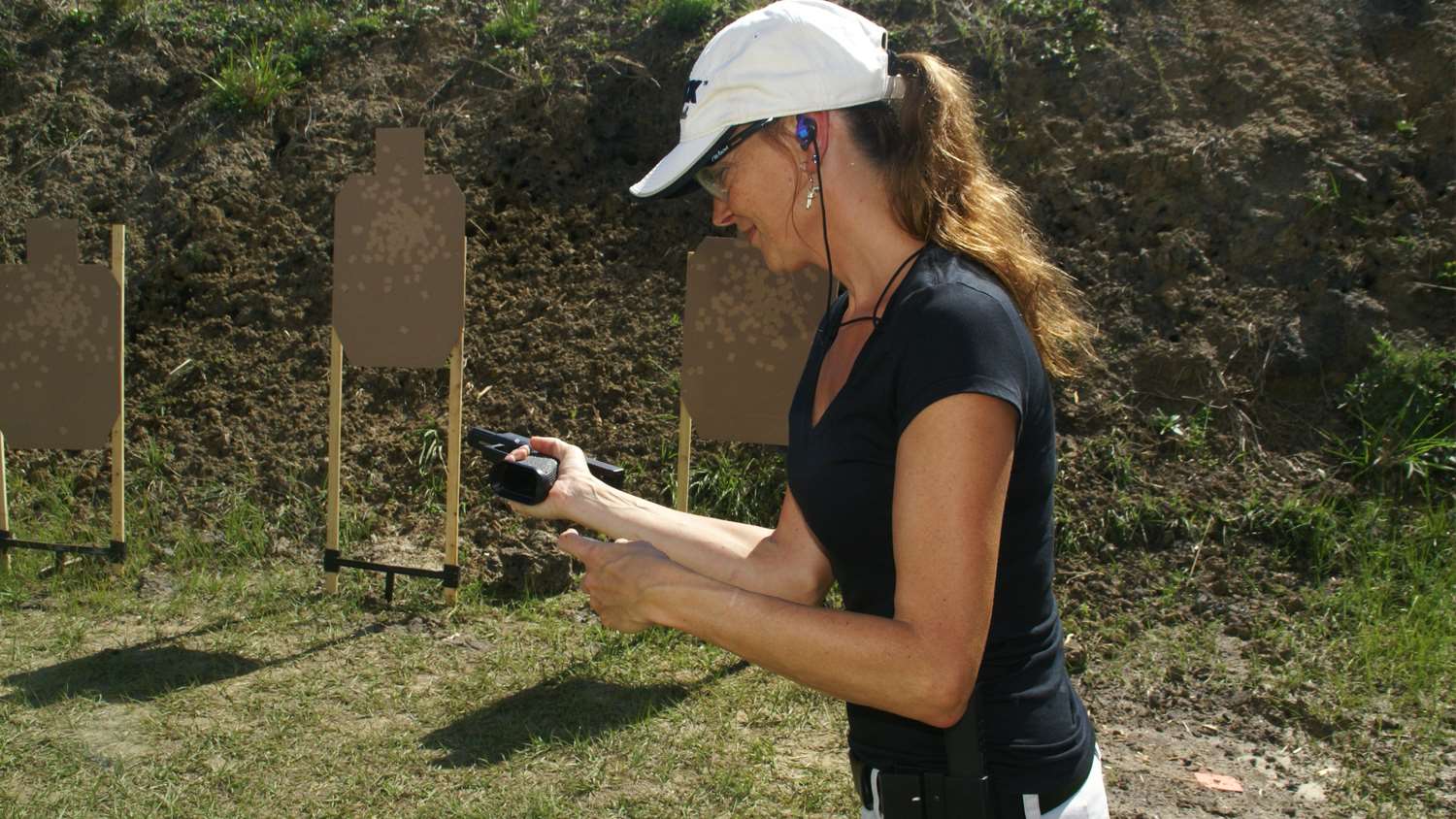
The Facing Up Range Start
There will be times when the COF specifies the shooter start by facing up range (South). At the buzzer they turn downrange, draw, and engage targets. Jeff Cooper’s El Presidente is a classic example of this.
Sometimes, in their haste to achieve fast times, shooters get the ‘turn’ and ‘draw’ reversed.
When the buzzer sounds there is nothing wrong with the shooter’s hand going to and gripping the holstered gun. But if the gun clears the holster—regardless of where the muzzle is pointed—before the shooter has fully-pivoted down range, the 180 will be violated. It’s a DQ. As an IDPA Safety Officer I have been ‘swept’ on more than one occasion. It’s not fun, but it was just an example of a shooter moving faster than they were thinking.
Moving faster than thought pretty much sums up how shooters receive a 180 Rule DQ. It only takes one careless moment to end their match day. Thinking through the upcoming evolutions, and planning the movements through a stage, is the best way to avoid the 180 DQ.













